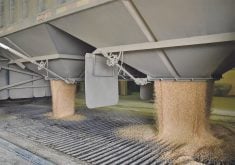It’s amazing how many new crop varieties are stymied by end users, often for what seem to be minor quality issues, sometimes real and sometimes only perceived.
Malting barley has long suffered from the reluctance of maltsters to adopt anything new. Producers have often been stuck growing agronomically inferior varieties as end users were gradually cajoled into accepting something farmers would rather be growing.
On the other end of the scale, feed barley varieties not eligible for malting are sometimes being bought by China as long as they have good germination. The price isn’t as good as for malting, but it’s better than the feed barley price and the Chinese use it to produce beer, even though the quality doesn’t stack up for more discerning end users.
Read Also

Kochia has become a significant problem for Prairie farmers
As you travel through southern Saskatchewan and Alberta, particularly in areas challenged by dry growing conditions, the magnitude of the kochia problem is easy to see.
Varietal discrimination seems the worst among the minor acreage crops. Agriculture Canada developed a hybrid brown mustard variety called AAC Brown 18. Variety trials show it has a 19 percent yield advantage over the standard variety Centennial brown. Quality parameters are nearly identical.
While the hybrid brown has been grown for several years, a couple of significant mustard buyers don’t want to contract it for 2024. Their customers want to turn the clock back to the very old Centennial brown variety. Overall, marketability seems to be even less than when it was originally released.
This has nothing to do with the variety being genetically modified. AAC Brown 18 was developed using conventional breeding technology.
As an occasional maple pea grower, I was happy to see the release of CDC Blazer from the Crop Development Centre a number of years ago. The old variety CDC Acer has much lower yields than other peas and it was notorious for lodging. CDC Mosaic solved the lodging problem, but still had the same low yield.
CDC Blazer has good standability and a yield comparable to the yellow pea check varieties. Unfortunately, it has always been an uphill battle to market.
Maple peas are exported to China where they are consumed as a sprouted product. CDC Blazer is a slightly larger seed than its predecessors, which presumably means fewer sprouts. Whatever the reasons, some buyers just don’t want CDC Blazer and others will only buy it at a significant discount.
I recently scouted around for certified CDC Blazer seed and couldn’t find any seed growers still producing it. Pity, when it’s such a great variety agronomically.
Canary seed has also had a brush with varietal non-acceptance. CDC Cibo is the first yellow-seeded variety, meaning underneath the hull, the seed coat is yellow rather than brown. That gives the variety a slightly different look. Birds don’t care, but some end users have complained.
In kabuli chickpeas, the push is for larger seed size. Those are the premium markets. Many buyers are specifying the maximum percentage of seven millimetre seed they will accept in the sample. Other buyers want a minimum percentage of nine mm seed.
Sask Pulse Growers is promoting the new varieties of peas, lentils and chickpeas developed with the help of grower investment. For chickpeas, it’s important to look beyond the yield statistics and also examine seed size. A new variety may yield more, but if the seed is too small, the sale price might be at a significant discount.
According to the old motto, the customer is always right. Often, that means decisions that don’t favour farmers.
Kevin Hursh is an agricultural journalist, consultant and farmer. He can be reached by e-mail at kevin@hursh.ca.


















